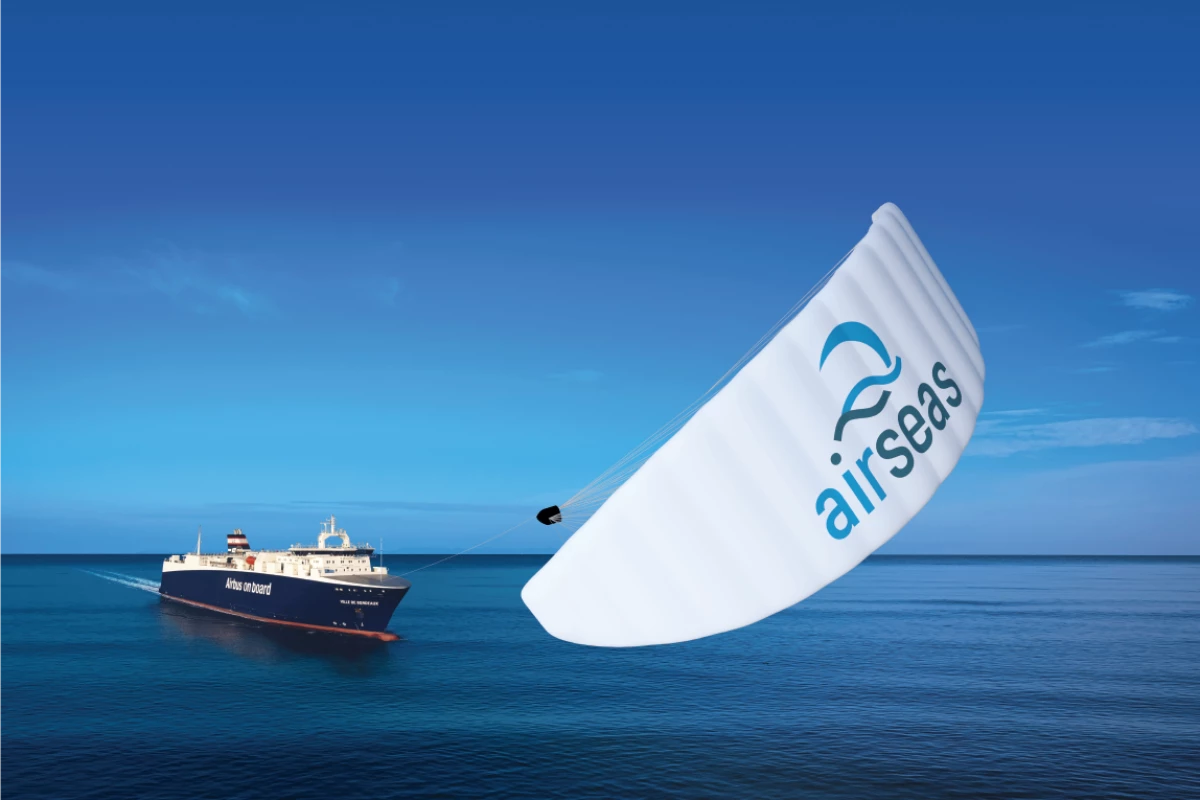French company Airseas has installed its first half-size automated Seawing kite to a cargo ship chartered by Airbus, and will commence six months of trials in January. The full-size kite is estimated to save up to 20 percent of fuel burn and emissions.
The US$30-million, 154-meter (505-ft) Ville de Bordeaux, owned and operated by Louis Dreyfus, is currently on a long-term lease to Airbus, which uses it to move large aircraft structures between its distributed manufacturing plants around Europe and its final assembly plant in Toulouse.
Now, it's been fitted with a 500-square-meter (5,400-sq-ft) parafoil kite, plus all the deck and bridge equipment required to run the Seawing system. The Seawing deploys automatically, first emerging from storage on a trolley, then raising up from the deck on a mast to catch the wind, and finally being released on a long cable to grab the steady, strong winds over about 200 m (656 ft) above sea level.
At this point, it begins a figure-eight trajectory at a speed over 100 km/h (62 mph), monitored and controlled by an automated system running on the ship that's programmed to place the kite for maximum traction power. The Seawing computers also interface with the ship's navigation systems, monitoring forward wind conditions and re-routing the ship to take the most efficient path possible without affecting its arrival time.

The kite about to undergo testing is half the size of the full 1,000-sq-m (10,800-sq-ft) kite that'll eventually be deployed for commercial operation. Airseas estimates the full-size system will cut both diesel consumption and shipping emissions by a remarkable 20 percent. Germany's Skysails Group has tested similar devices up to 400 sq m (4,300 sq ft) in size, finding they replace up to 2 MW of power from the main engines under favorable wind conditions.
Airseas says the Seawing system can be retro-fitted to virtually all ship types, requiring only about two days for the conversion and not getting in the way of cargo operations in port. We'd certainly be interested to learn more about the economics of this kind of system; fuel costs for large freighters are enormous, and a 20 percent saving would add up to a significant figure very quickly.
Interestingly, it seems you can get an even more significant drop in fuel consumption simply by slowing down a few knots; a 2009 study found that an 8,000-TEU container ship burns around 225 tons of fuel a day at 24 knots (27.6 mph, 44.4 km/h), but can drop that by 33 percent if it travels a smidge slower at 21 knots (24.2 mph, 38.9 km/h).

Still, with range and energy storage proving a significant challenge for the decarbonization of long-haul shipping, an emissions-free system like this could give a clean 20 percent range boost to hydrogen or ammonia-powered ships that could really use it. Using wind to power ships ... Who would've thought, eh?
“A decade ago, we embarked on the ambitious project of channelling our unique aviation expertise towards creating a cleaner and more sustainable shipping industry," says Vincent Bernatets, CEO and Co-Founder of Airseas and a former engineer at Airbus. "Today, I am beyond proud to see that vision becoming reality, with our first Seawing ready to make a tangible difference for our planet. This first installation marks a significant milestone not only for Airseas, but also for wind and other renewable propulsion technologies in general. Given the urgency of the climate crisis, the world needs to see a drastic reduction in carbon emissions now. In shipping, we can achieve this by using the full set of tools we have available to us today. Wind propulsion is one of these and will play an essential role in helping shipping achieve its much-needed decarbonization transition.”
Source: Airseas






